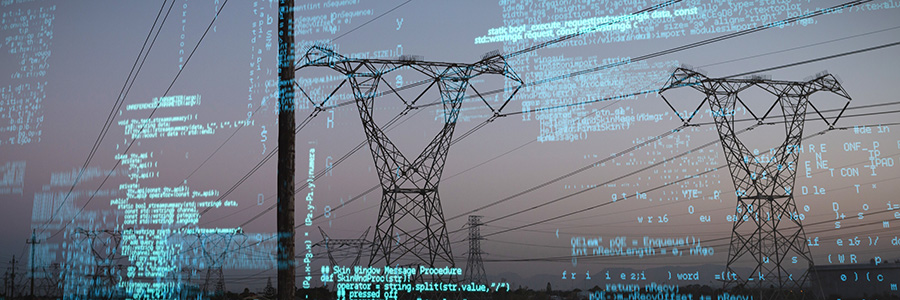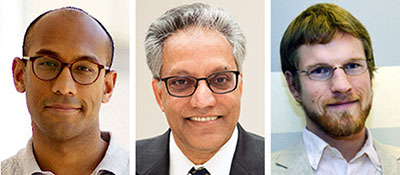By Molly A. Seltzer
Research seeking to protect the power grid from hackers tapping into armies of smart home appliances, and an effort to harvest drinking water from the air, have been selected for funding by Princeton E-ffiliates Partnership (E-ffiliates).
Staving off rogue appliances

The idea of an army of dishwashers and clothes dryers massing to take down the power grid seems surprising, but it could be a real threat in the future. In the hands of sophisticated hackers, new smart appliances, which are all connected to the internet and the grid, offer ways to manipulate power demand on a massive scale.

E-ffiliates is supporting research that aims to address a future where water heaters, air conditioners, and other high-wattage devices are vulnerable to unpredictable attacks that shut off or turn on the appliances, which can create large unexpected changes in power demand and cause massive blackouts. The researchers seek to develop systems and algorithms that can inform grid operations to minimize the impacts from such breaches and prevent serious disruptions in power delivery. Today, grid operators plan for and effectively manage expected upticks or drops in electricity demand, but significant unexpected ones, like those that can come from a coordinated hack of hundreds of thousands of home appliances within a geographic area, can lead to power interruptions as the grid responds to these changes. The project is led by Prateek Mittal, associate professor of electrical engineering, in collaboration with Vincent Poor, interim dean of the School of Engineering and Applied Science and the Michael Henry Strater University Professor of Electrical Engineering. The team will outline best practices for grid operators, for example, by identifying the maximum amount of electricity that should flow through power lines. While the initial research is geared toward entities that manage the grid, the investigators said the research can also help companies that design smart devices to incorporate changes that safeguard against these attacks and recognize and respond to uncommon patterns of use.
“This may not be an issue today, but as more smart appliances are installed in kitchens and bedrooms, and ‘smart homes’ become the norm, we need to ensure these appliances do not become entry points for bad actors and that the grid is robust enough to mitigate against possible attacks,” said Mittal.
Pulling water from the air

As the climate changes, drought is worsening across large swaths of the globe. To combat this, a team of Princeton researchers is looking to an unusual water source – the air. The team aims to use thermo-responsive hydrogels, or networks of polymers that are commonly used in biomedical applications, for water harvesting. The thermo-responsive hydrogels change whether they attract or repel water depending on their temperature. One example of how the technology may work is that the material absorbs water from the air in the evening when it is cool, and when the temperature warms up during the day beyond a certain threshold, the hydrogel releases the absorbed water. Existing water harvesting technologies typically use desiccants, materials similar to the gels that keep new shoes dry, which require a lot of energy and an external source of heat or electricity to release the captured moisture. In contrast, these hydrogels only require small temperature swings to expel the absorbed water.

The project is the result of a collaboration between Sujit Datta, assistant professor of chemical and biological engineering, Sankaran Sundaresan, and Forrest Meggers. Sundaresan is the Norman John Sollenberger Professor in Engineering, and professor of chemical and biological engineering, and Meggers is an assistant professor of architecture and the Andlinger Center for Energy and the Environment. To create and test a prototype for harvesting water from the air, the research team will use Datta’s expertise in investigating the physics and chemistry of hydrogels, Sundaresan’s experience in understanding how quickly systems absorb and release water, and Meggers’ expertise in designing systems to control indoor and outdoor environments. This work advances collaborative research between Meggers’ lab and Politecnico di Torino on water harvesting technologies. The researchers aim to identify governing properties of how such a system will work, and identify the temperature and humidity conditions under which the system optimally operates. They also seek to answer key questions, such as how much water can be produced from a given amount of hydrogel.
“Our vision is to create a system that can function in various humidity and environmental conditions and produce potable water with minimal energy cost,” said Datta. “For this we needed to build a team with expertise in several fields – the chemistry of materials, multi-phase flows, and heat transfer.”
“The future ubiquity of smart devices in homes, and the increasing prevalence of water-scarce areas made these projects particularly relevant and fields that warrant new innovative, interdisciplinary research,” said Barry Rand, associate director for external partnerships at the Andlinger Center for Energy and the Environment.
Princeton E-ffiliates Partnership offers corporations an opportunity to engage in big-picture thinking and pursue transformational innovations on campus. Through E-ffiliates, corporate members have provided $9.5 million in cumulative funding for research projects, supported 70 faculty, researchers, and students, and facilitated 44 collaborations across the University.